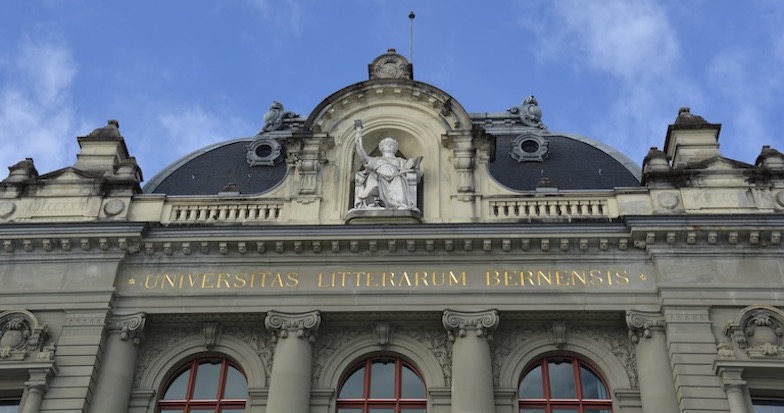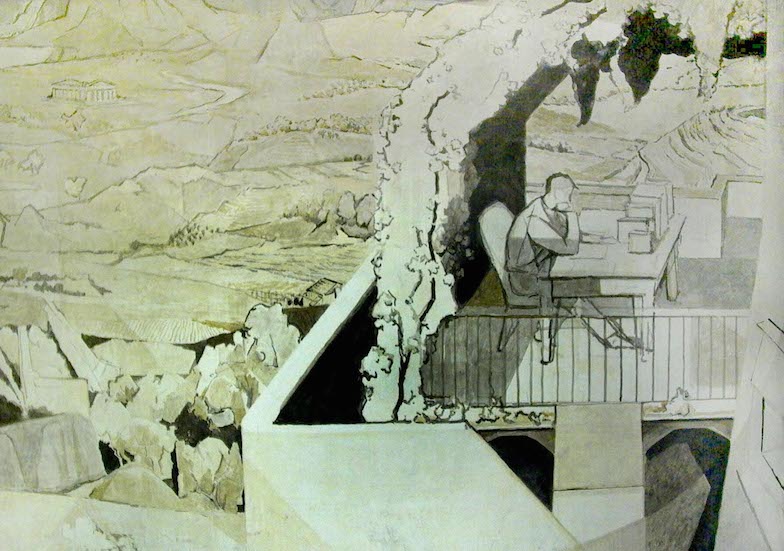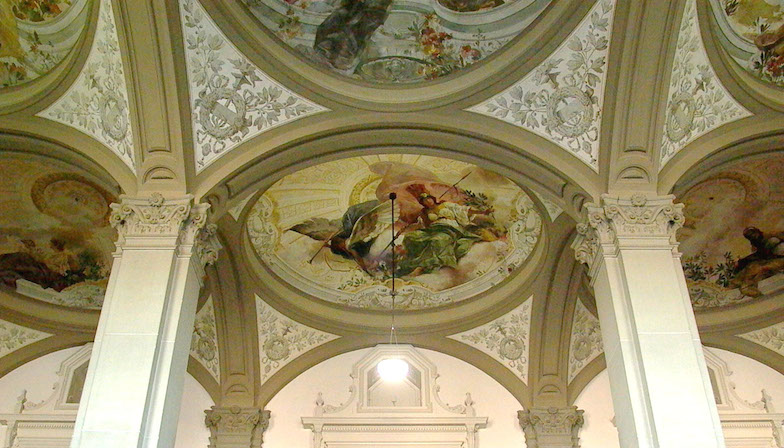Buildings of the University of Bern
Monuments of Knowledge
Architecture does not play a major role in the day-to-day life of the university. And yet anyone entering an institute for the first time gains a lasting impression on the basis of the building. And anyone standing in front of the doors of the Chancellery or the President's Office is initially likely to feel welcome or not depending on the signals sent out by the building.

Anyone who has been going in and out of a building for some time will have addressed its properties, acquired a taste for it, know things about its builder and events from the past and perhaps even perceive it as part of his or her own history. The building becomes a monument. The Latin word "monere" means to "remind".
The Bernese artist Victor Surbek has created a work that vividly portrays in a nutshell the link between the university as a "building of knowledge" and the monumental character of architecture in his fresco Southern Landscape of 1957 in the foyer of the School of Dental Medicine on Freiburgstrasse 7.

Aesthetics and improvisation
Without wishing to force a far-fetched interpretation onto Surbek's fresco, it can be assumed that the Arcadian landscape primarily exists in the mind of the student immersed in his books. The temple greeting from afar symbolizes man's impact on nature – or to put it in a pointed manner: cultural achievements per se. Such a conception of the works of architecture – as the material testimony to cultural activity – forms the basis of this architectural guide.
If we question the common denominator of all university buildings, it can be assumed that the endeavor to represent the aesthetic and intellectual in a contemporary form stands at the forefront. However, this property only becomes interesting when contrasted with a certain degree of improvisation that characterizes most university buildings to at least the same degree. Each building just as much comprises the village schoolmaster's classroom as the palace in which the king gathers his wise advisors around him. A glance at the side wing of the main building with its unclad ceilings serves to prove this.
Myth and Utopia
Many university buildings are particularly interesting if they house major technical appliances or serve unusual purposes. However, not all functional needs are illustrated so vividly in architectural terms as the observatory dome, the operating theater for large animals or the model school. The largest myths surround the most inaccessible places: What would the Institute of Exact Sciences be without its underground laboratory that – like the subconscious in the depth of our soul – lies dormant in the earth's interior deep below the institute building?

Most architects are aware that they send their works on a time journey and equip them for the needs of generations to come. This is what forms the Utopian element of architecture. Unlike might be the case with an 'ordinary' art guide, this guide aims to tune in to the simplest and most everyday objects but from here to spread out this huge bracket to Utopian dimensions – a bracket that is typical of the potential of the often neglected discipline of architecture. In doing so we hope to discover what the visions were at the time the selected buildings were constructed and what is science. However, this guide is primarily intended to arouse a passion and interest in a richness that we all partake in every day.
The University of Bern in its Urban Environment

Unlike many other universities, the University of Bern continued to remain a city university after 1950: although the idea of building a campus on the outskirts of the city was discussed, it was never realized. Instead, the university expanded within the Länggass district close to the city center, partly on the Muesmattfeld that was still undeveloped and partly on disused industrial sites. Particularly the conversion of the former Tobler chocolate factory into the Unitobler Center of Social Sciences and Humanities gained prominence. This process that was launched under the keyword "Strategy 3012" is being continued with the recently acquired site of the former von Roll works. The physical distances between the institutes at this city university are comparable with existing campus solutions in Switzerland.
